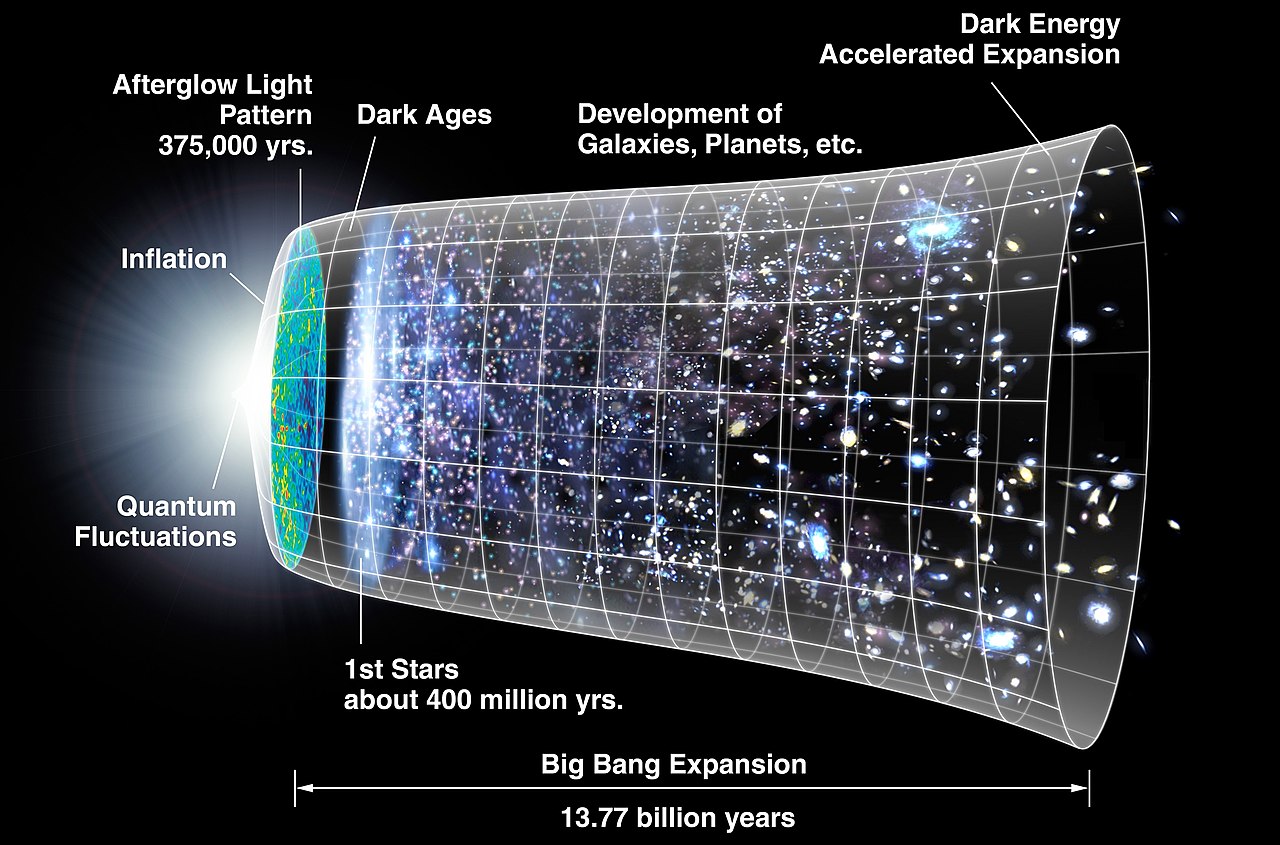Johns Hopkins University (JHU) continues to pad its space community résumé with their interactive map, “The map of the observable Universe”, that takes viewers on a 13.7-billion-year-old tour of the cosmos from the present to the moments after the Big Bang. While JHU is responsible for creating the site, additional contributions were made by NASA, the European Space Agency, the National Science Foundation, and the Sloan Foundation.
Continue reading “Scroll Through the Universe with This Cool Interactive Map”New Model Predicts That We’re Probably the Only Advanced Civilization in the Observable Universe

The Fermi Paradox remains a stumbling block when it comes to the search for extra-terrestrial intelligence (SETI). Named in honor of the famed physicist Enrico Fermi who first proposed it, this paradox addresses the apparent disparity between the expected probability that intelligent life is plentiful in the Universe, and the apparent lack of evidence of extra-terrestrial intelligence (ETI).
In the decades since Enrico Fermi first posed the question that encapsulates this paradox (“Where is everybody?”), scientists have attempted to explain this disparity one way or another. But in a new study conducted by three famed scholars from the Future of Humanity Institute (FHI) at Oxford University, the paradox is reevaluated in such a way that it makes it seem likely that humanity is alone in the observable Universe.
Continue reading “New Model Predicts That We’re Probably the Only Advanced Civilization in the Observable Universe”How Many Galaxies Are There in the Universe?
The wonderful thing about science is that it’s constantly searching for new evidence, revising estimates, throwing out theories, and sometimes discovering aspects of the Universe that we never realized existed.
The best science is skeptical of itself, always examining its own theories to find out where they could be wrong, and seriously considering new ideas to see if they better explain the observations and data.
What this means is that whenever I state some conclusion that science has reached, you can’t come back a few years later and throw that answer in my face. Science changes, it’s not my fault.
I get it, VY Canis Majoris isn’t the biggest star any more, it’s whatever the biggest star is right now. UY Scuti? That what it is today, but I’m sure it’ll be a totally different star when you watch this in a few years.
What I’m saying is, the science changes, numbers update, and we don’t need to get concerned when it happens. Change is a good thing. And so, it’s with no big surprise that I need to update the estimate for the number of galaxies in the observable Universe. Until a couple of weeks ago, the established count for galaxies was about 200 billion galaxies.
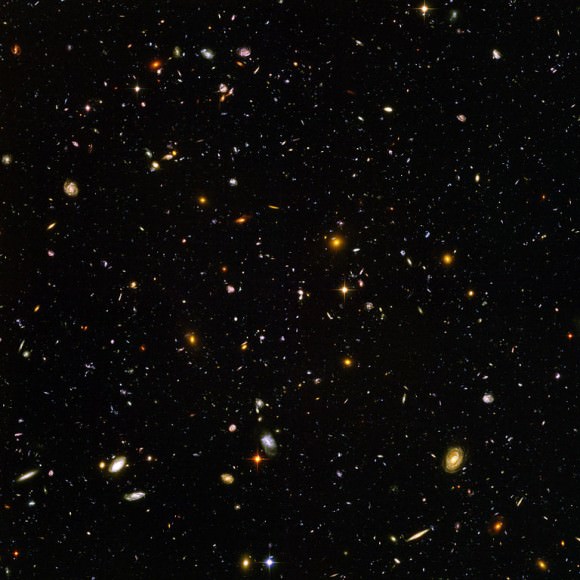
But a new paper published in the Astrophysics Journal revised the estimate for the number of galaxies, by a factor of 10, from 200 billion to 2 trillion. 200 billion, I could wrap my head around, I say billion all the time. But 2 trillion? That’s just an incomprehensible number.
Does that throw all the previous estimates for the number of stars up as well? Actually, it doesn’t.
The observable Universe measures 13.8 billion light-years in all directions. What this means is that at the very edge of what we can see, is the light left that region 13.8 billion years ago. Furthermore, the expansion of the Universe has carried to those regions 46 billion light-years away.
Does that make sense? The light you’re seeing is 13.8 billion light-years old, but now it’s 46 billion light-years away. What this means is that the expansion of space has stretched out the light from all the photons trying to reach us.
What might have been visible or ultraviolet radiation in the past, has shifted into infrared, and even microwaves at the very edge of the observable Universe.
Since astronomers know the volume of the observable Universe, and they can calculate the density of the Universe, they know the mass of the entire Universe. 3.4 x 10^54 kilograms including regular matter and dark matter. They also know the ratio of regular matter to dark matter, so they can calculate the total amount of regular mass in the Universe.
In the past, astronomers divided that total mass by the number of galaxies they could see in the original Hubble data and determined there were about 200 billion galaxies.
Now, astronomers used a new technique to estimate the galaxies and it’s pretty cool. Astronomers used the Hubble Space Telescope to peer into a seemingly empty part of the sky and identified all the galaxies in it. This is the Hubble Ultra Deep Field, and it’s one of the most amazing pictures Hubble has ever captured.
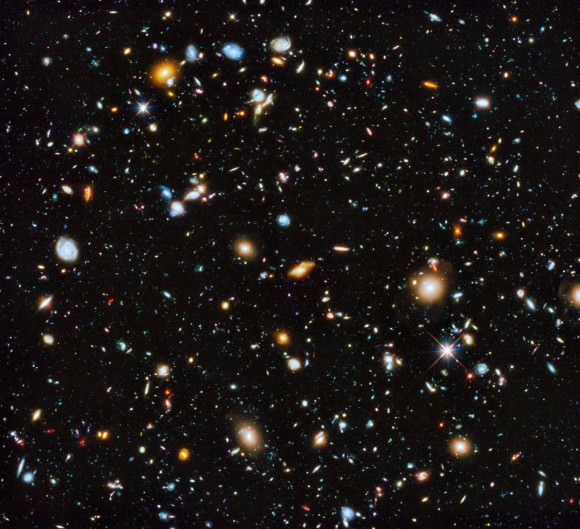
Astronomers painstakingly converted this image of galaxies into a 3-dimensional map of galaxy size and locations. Then, they used their knowledge of galaxy structure closer to home to provide a more accurate estimate of what the galaxies must look like, out there, at the very edge of our observational ability.
For example, the Milky Way is surrounded by about 50 satellite dwarf galaxies, each of which has a fraction of the mass of the Milky Way.
By recognizing which were the larger main galaxies, they could calculate the distribution of smaller, dimmer dwarf galaxies that weren’t visible in the Hubble images.
In other words, if the distant Universe is similar to the nearby Universe, and this is one of the principles of modern astronomy, then the distant galaxies have the same structure as nearby galaxies.
It doesn’t mean that the Universe is bigger than we thought, or that there are more stars, it just means that the Universe contains more galaxies, which have less stars in them. There are the big main galaxies, and then a smooth distribution curve of smaller and smaller galaxies down to the tiny dwarf galaxies. The total number of stars comes out to be the same number.
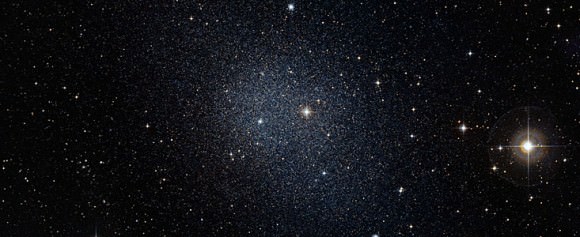
The galaxies we can see are just the tip of the galactic iceberg. For every galaxy we can see, there are another 9, smaller fainter galaxies that we can’t see.
Of course, we’re just a few years away from being able to see these dimmer galaxies. When NASA’s James Webb Space Telescope launches in October, 2018, it’s going to be carrying a telescope mirror with 25 square meters of collecting surface, compared to Hubble’s 4.5 square meters.
Furthermore, James Webb is an infrared telescope, a specialized tool for looking at cooler objects, and galaxies which are billions of light-years away. The kinds of galaxies that Hubble can only hint at, James Webb will be able to see directly.
So, why don’t we see galaxies in all directions with our eyeballs? This is actually an old conundrum, proposed by Wilhelm Olbers in the 1700, appropriately named Olber’s Paradox. We did a whole article on it, but the basic idea is that if you look in any direction, you’ll eventually hit a star. It could be close, like the Sun, or very far away, but whatever the case, it should be stars in all directions. Which means that the entire night sky should be as bright as the surface of a star. Clearly it isn’t, but why isn’t it?
In fact, with 10 times the number of galaxies, you could restate the paradox and say that in every direction, you should be looking at a galaxy, but that’s not what you see.
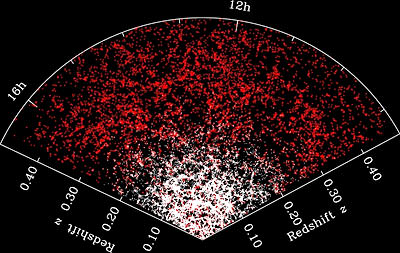
Except you are. Everywhere you look, in all directions, you’re seeing galaxies. It’s just that those galaxies are red-shifted from the visible spectrum into the infrared spectrum, so your eyeballs can’t perceive them. But they’re there.
When you see the sky in microwaves, it does indeed glow in all directions. That’s the Cosmic Microwave Background Radiation, shining behind all those galaxies.
It turns out the Universe has 10 times more galaxies than previously estimated – 2 trillion galaxies. Not 10 times the stars or mass, those numbers have stayed the same.
And, once James Webb launches, those numbers will be fine-tuned again to be even more precise. 1.5 trillion? 3.4 trillion? Stay tuned for the better number.
What Does the Universe Do When We’re Not Looking?
If you follow some of my other shows, like Astronomy Cast and the Weekly Space Hangout. Of course you do, what a ridiculous thing to say… “if”. Anyway, since you follow those other shows, you know I’m currently obsessed with an upcoming observatory called the Large Synoptic Survey Telescope.
Obsessions are best when they’re shared. So today, I invite you to become as obsessed as I am about the LSST.
In the past, astronomers focused on building bigger telescopes at more remote locations so they could peer more deeply into the past, to resolve the faintest objects, to see right to the edge of the observable Universe.
But there’s a whole other dimension to the Universe: time. And by taking advantage of time, astronomers have made some of the most momentous discoveries in the history of astronomy.
The Large Synoptic Survey Telescope is all about time. Watching the sky over and over, night after night, watching for anything that changes.
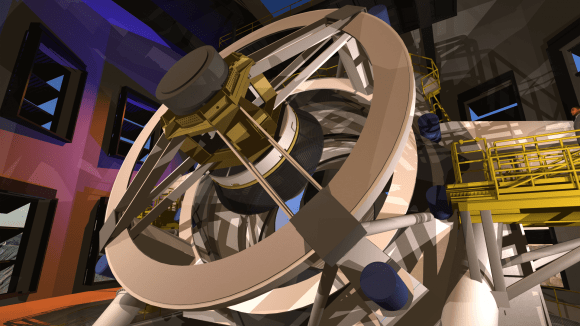
First, let’s talk about some of the kinds of discoveries that can be made when you’re watching the sky for changes.
Perhaps the best example of this is the Mira Variable. These are red giants at the very end of their stellar evolution, almost out of usable hydrogen to burn in their cores. As their stellar flame flickers out, the light pressure can no longer hold against the gravity pulling the star inward. The star compresses in on itself, raising the temperature and pressure, allowing more fusion. It flares up again, and brightens in our sky.
Astronomers discovered that there’s a very specific relationship to the brightness and rate that this brightening happens. In other words, if you know how often a Mira variable flares up, you know how intrinsically bright it is. And if you know how bright it is, you can calculate how far away it is. Even in other galaxies.
That’s what Edwin Hubble did when he surveyed Mira variables in other galaxies. He discovered that most galaxies are actually speeding away from us in all directions, leading to the theory of the Big Bang.
Thanks to time, we understand that we life in an expanding Universe that originated from a single point, 13.8 billion years ago.
Let me give you another example: the discovery of gamma ray bursts. In the 1960s, the US launched a group of satellites as part of the Vela Mission. They had no astronomical purpose, they were designed to watch for the specific gamma ray signature from an unauthorized nuclear weapons test. But instead of nuclear explosions, they detected massive blasts of gamma radiation coming from deep space. These blasts only last for a few seconds and then fade away, leaving a faint afterglow that also fades.
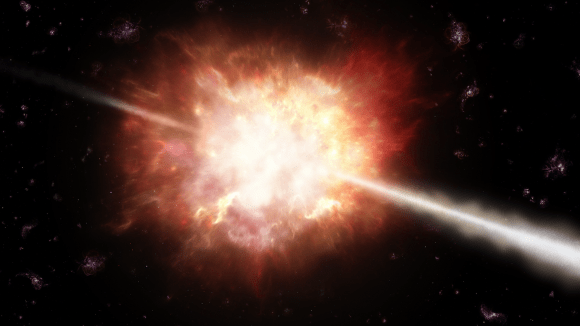
We now know that gamma ray bursts mark the deaths of the largest stars in the Universe, and the formations of new black holes. Other gamma ray bursts signal the collisions of exotic stellar remnants, like neutron stars and white dwarfs.
I can give you many more examples, where the dimension of time lead to a discovery in astronomy:
In 1930, Clyde Tombaugh compared pairs of photographic plates, switching back and forth over and over, looking for any object that moved position. This was how he discovered Pluto. In fact, this same technique is used by astronomers to find other dwarf planets, asteroids and comets to this day.
Astronomers return again and again to galaxies in the night sky, looking for any that have a new star in them. This is a tell tale sign of a supernova, the explosion of a star much more massive than our Sun. Some of these supernovae allowed astronomers to discover dark energy, that the expansion of the Universe is accelerating.
This is what time can help us discover.
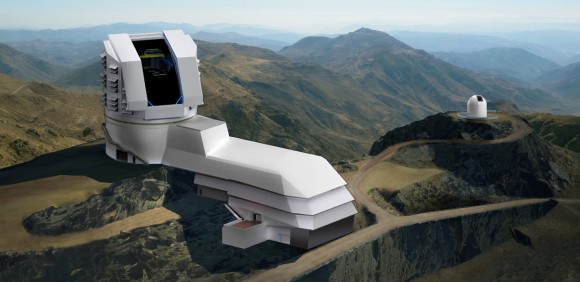
Now, on to the Large Synoptic Survey Telescope. The observatory is currently under construction in north-central Chile, where many of the world’s most powerful telescopes are located.
Its main mirror is 8.4 meters across. Just for comparison, ESO’s Very Large Telescopes are 8.2 metres across. The Gemini Observatories are 8.1 metres across. The Keck Observatory is 10 metres wide. What I’m saying here, is that the LSST is plenty big.
But that’s not its most important feature. LSST is fast. When I say fast, I’m saying this in the astronomical sense, which means that it can gather a lot of light over a wide area on the sky in a very short amount of time. While Keck, for example, can focus incredibly deeply at a tiny spot in the sky, LSST gulps light across a huge region of the sky.
It’ll be able to see 3.5-degrees of the sky, every time it takes a picture. The Sun and the Moon are about 0.5-degrees across in the sky, so imagine a grid 7 moons across and 7 moons high.
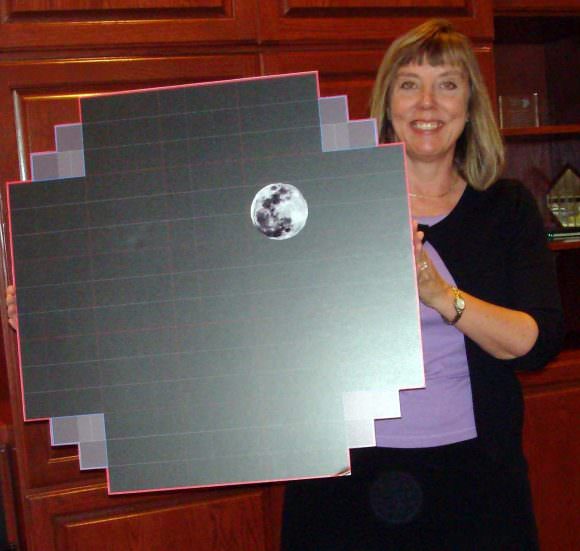
It’ll take a 15-second exposure every 20 seconds. In the amount of time you’ll spend watching this video, the LSST could have taken dozens of high resolution images of the sky.
In fact, it’ll completely image the available sky every few nights. And then petabytes of data will be released onto the internet, available for astronomers to pore over.
Want to find asteroids, just look through the LSST records. Want to know how fast the Universe is expanding, dig through the data. LSST is going to look everywhere and anywhere every couple of nights, and then provide this data to scientists to make discoveries.
Assuming the construction isn’t delayed, the Large Synoptic Survey Telescope should see first light in 2019. Shortly after that, it’ll be disgorging mountains of astronomical data onto the internet.
And shortly after that, I suspect, we’ll start to hear everything the Universe was doing when we weren’t watching before. Because now, thanks to LSST, we’ll be watching all the time.

